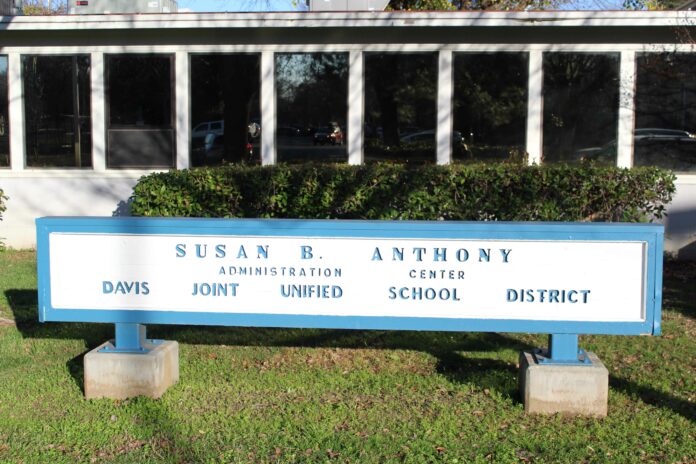Measure G would implement parcel tax on Davis properties to offer competitive teacher, employee salaries
The Davis Joint Unified School District (DJUSD) and local education advocates are seeking support for Measure G, a citywide ballot proposition that would increase district teacher and employee pay through the implementation of a parcel tax.
Measure G is one of two local ballot measures that Davis residents will vote on during the March 3 primary elections, along with Measure Q. Under California law, parcel taxes fall under special tax designation — meaning that two-thirds of voters will have to vote “yes” on the measure for it to pass.
The ballot measure seeks additional funding for Davis schools in the DJUSD through the implementation of a parcel tax according to the text of Measure G. If passed, the measure would add a $198 annual tax for each parcel of taxable real estate for property owners in Davis, beginning on July 1, 2020. The tax would be increased annually to account for inflation.
The goal of this parcel tax, according to the text of the measure, is to generate funds for the school district to “attract and retain quality teachers and staff by keeping compensation competitive.” In other words, the funds raised by the tax would be used to increase DJUSD teacher and staff salaries.
Joe DiNunzio, a trustee on the DJUSD Board of Education, said improving teachers and employee salaries is critical for the district to obtain and keep quality teachers and staff — and by extension, maintain Davis schools’ reputation for academic excellence.
“Delivering excellent public schools requires excellent teachers and staff — and to recruit and retain them, you have to have competitive compensation,” DiNunzio said.
Davis teacher salaries lag behind comparable districts, DiNunzio said, which presents a challenge for the DJUSD to recruit quality staff in the future.
“As [we] look at regional comparable districts — ones that are roughly the same size as us, with similar characteristics — on average, we pay our teachers and staff five to seven, in some cases, nine percent less,” DiNunzio said.
Attracting new teachers will become a more pressing issue in the near future, as the district seeks to replace current teachers approaching retirement, according to DiNunzio.
“A lot of our teachers and staff are senior,” DiNunzio said. “We estimate between a quarter and a third of them are likely to retire in the next three to five to seven years. There’s a significant teacher shortage across the state of California, and the nation for that matter. So replacing these teachers will be critical and difficult.”
Victor Lagunes, a teacher at Da Vinci Jr. High and President of the Davis Teachers Association, said that some DJUSD schools are already feeling the impact of an impending teacher shortage.
“We’re starting to see the effects of [the teacher shortage] in our own district,” Langunes said. “There are plenty of examples to give, but one of the most notable ones right now: there’s a fifth-grade classroom that has had no teacher, the whole year.”
Alan Fernades, another trustee on the DJUSD board, said that this classroom now has a teacher, but that the issue was “indicative of the early signs” of the challenges the district might face in the near future.
The DJUSD is seeking to increase staff compensation to at or above the regional average, which requires an average three million dollars a year, DiNunzio said, roughly the sum that the proposed parcel tax will provide.
Critics of Measure G, such as the Yolo Taxpayers Association, have argued that the district should find a way to increase staff pay by other means. An oppositional argument submitted to the Yolo Elections Board by the No Parcel Taxes PAC points to recent ballot measures over the past few years that increased Davis school funding.
“In 2016 we approved Measure H, a $620/year parcel tax supporting Davis schools,” the rebuttal read. “In 2018 we approved Measure M, giving our schools 11 million annually for 30 years. Now, we are being asked to raise taxes yet again. Might existing funds be used to increase teacher salaries?”
But DiNunzio said that 85% of DJUSD funds already go to staff compensation, leaving few options for cost-cutting measures outside of cutting school programs or teaching jobs. The district’s need for additional funding is in part due to a dearth of funds from the state under California’s Local Control Funding Formula, according to DiNunzio.
“Davis gets less than the average California district […] in large part because of the makeup of our students,” DiNunzio said. “So we’re already starting from a revenue gap. The only revenue tool we have as a local educational authority is a parcel tax.”
Written by: Tim Lalonde — city@theaggie.org





Maybe the greedy folks who are overdeveloping Davis for their own financial gain ought to provide the additional funding.